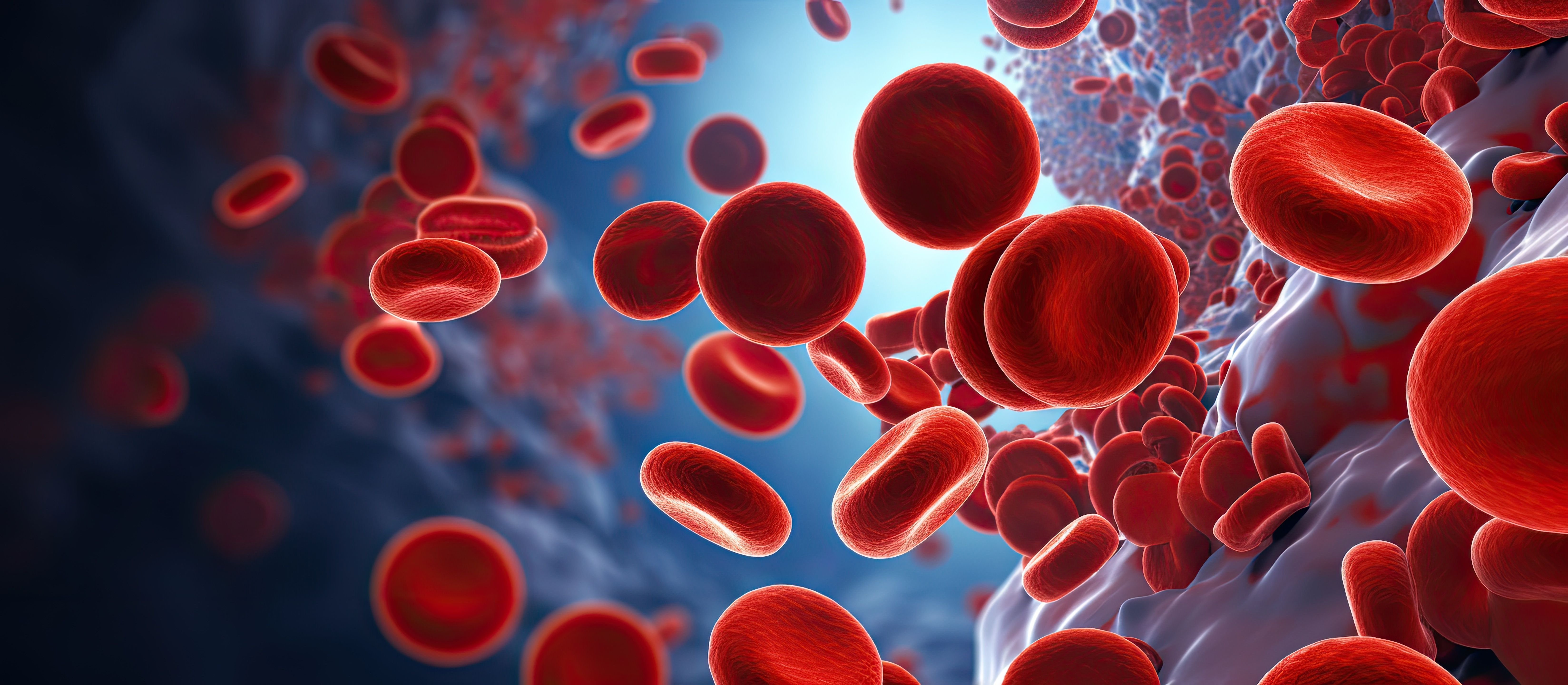Real-World Data Shows Brexu-cel's Impact on Relapsed/Refractory B-Cell ALL
In an interview with Targeted Oncology, Evandro D. Bezerra, MD, discussed the real-world effectiveness of brexu-cel for relapsed/refractory B-cell acute lymphocytic leukemia.
Microscopic image of red blood cells: © AkuAku - stock.adobe.com

Real-world data from the Center for International Blood and Marrow Transplant Research (CIBMTR) Registry showed the effectiveness of brexucabtagene autoleucel (Tecartus; brexu-cel) for the treatment of patients with relapsed/refractory (R/R) B-cell acute lymphoblastic leukemia (ALL).1
In 2021, brexu-cel became the first CD19-directed chimeric antigen receptor (CAR) T-cell therapy to be approved by the FDA for adult patients with R/R B-cell ALL. Data from the phase 1/2 ZUMA-3 trial (NCT02614066) supported this regulatory decision and showed that treatment with brexu-cel achieved a high rate of complete remission (CR; 71%) or CR with incomplete hematologic recovery (CRi). A manageable safety profile was also observed among those included. Because of this, experts sought to evaluate the outcomes of brexu-cel in a broad, real-world patient population.
Ninety-one percent of patients in the real-world evaluation were deemed ineligible for the ZUMA-3 trial, most commonly due to low disease burden, with nearly 40% of patients having less than 5% bone marrow blasts, which was a minimum requirement for ZUMA-3. However the rates of CR without hematological recovery with brexu-cel in this population were consistent with those observed in the clinical trial population.
By day 100 postinfusion, the overall CR/CRi rate was 76% and 70% of patients were still in remission at 6 months after initial response (95% CI, 55%-80%). A total of 63% of patients who were not in response before lymphodepletion converted into a CR/CRi. Additionally, relapse-free survival at 6 months was 53% (95% CI, 42%-62%), and the overall survival rate at 6 months was 78% (95% CI, 69%-84%).
Despite the differences between the patient populations in the real-world and clinical settings, the efficacy of brexu-cel in this real-world analysis was consistent with what was observed in the clinical trial.
Evandro D. Bezerra, MD

In an interview with Targeted OncologyTM, Evandro D. Bezerra, MD, the Ohio State Comprehensive Cancer Center – James Cancer Hospital and Solove Research Institute, discussed the real-world effectiveness of brexu-cel for relapsed/refractory B-cell ALL.
Targeted Oncology: Can you discuss brexu-cel and how it has been developed thus far?
Bezerra: Brexu-cel is a CD19 CAR T-cell therapy for patients with relapsed/refractory B-cell ALL and also other B-cell malignancies. [These] data show the real-world outcomes of brexu-cel since it was approved as a standard –of care for this patient population. [These data] show that the brexu-cel is highly effective in the real-world setting, consistent with the data from the ZUMA-3 clinical trial, despite the significant difference between the patient populations in the ZUMA-3 clinical trial and the real-world population.
Can you provide some background on ZUMA-3?
The ZUMA-3 clinical trial was the pivotal trial that led to the approval of brexu-cel for relapsed/refractory B-cell ALL. [In] that trial, patients with relapsed/refractory B-cell ALL received brexu-cel, and they had high efficacy, with CR rates of 71%, and patients that responded had a median overall survival of 47 months.
How does the real-world population compare with the clinical trial population?
A very interesting finding of our research was that 91% of the patients would not be or would potentially be ineligible to submit to clinical trials, showing a difference of the patient population of treating the trial in the real-world patient population. One of the most common reasons was a low disease burden, and around 40% of our patients had less than 5% bone marrow blasts. That was the minimum requirements in the clinical trial. And despite this difference, the real-world setting showed that patients who had brexu-cel were highly effective.
Were there any specific subgroups of patients who responded well or poorly to brexu-cel?
Another interesting finding of our data is that is the subgroup analysis that we performed by looking at patients that were in [complete response] or not, had [minimal residual disease (MRD)] or not, had prior blinatumomab [Blincyto] or not, had the extramedullary disease or not, had a prior transplant or not, did not see a significant difference in the effective outcomes, like [complete response rate], relapse-free survival, [and] overall survival.
How do the rates of cytokine release syndrome (CRS) and other adverse events compare with what was seen in ZUMA-3?
They are consistent. We saw an 80% rate of CRS, 9% of CRS that was grade 3 or higher, 47% rates of [immune effector cell-associated neurotoxicity syndrome (ICANS)], and 23% of rates of grade 3 or higher ICANS. This is similar to the scene in the ZUMA-3 clinical trial, showing that brexu-cel has a safety profile consistent to that seen in the ZUMA-3 clinical trial and is manageable in the real-world setting.
For a community oncologist, what would you say are the key takeaways from this research?
One of the main takeaways is that in the ZUMA clinical trial, patients had a minimal requirement of 5% blasts in the bone marrow to be eligible for the treatment. In the real-world setting, a lot of these patients are receiving brexu-cel with less than 5% bone marrow blasts. Despite this, brexu-cel still remains effective. Even the patients that are responding to salvage therapy or bridging therapy, they still respond to brexu-cel, and the patients should be considered to receive brexu-cel, despite having lower disease [burden].









